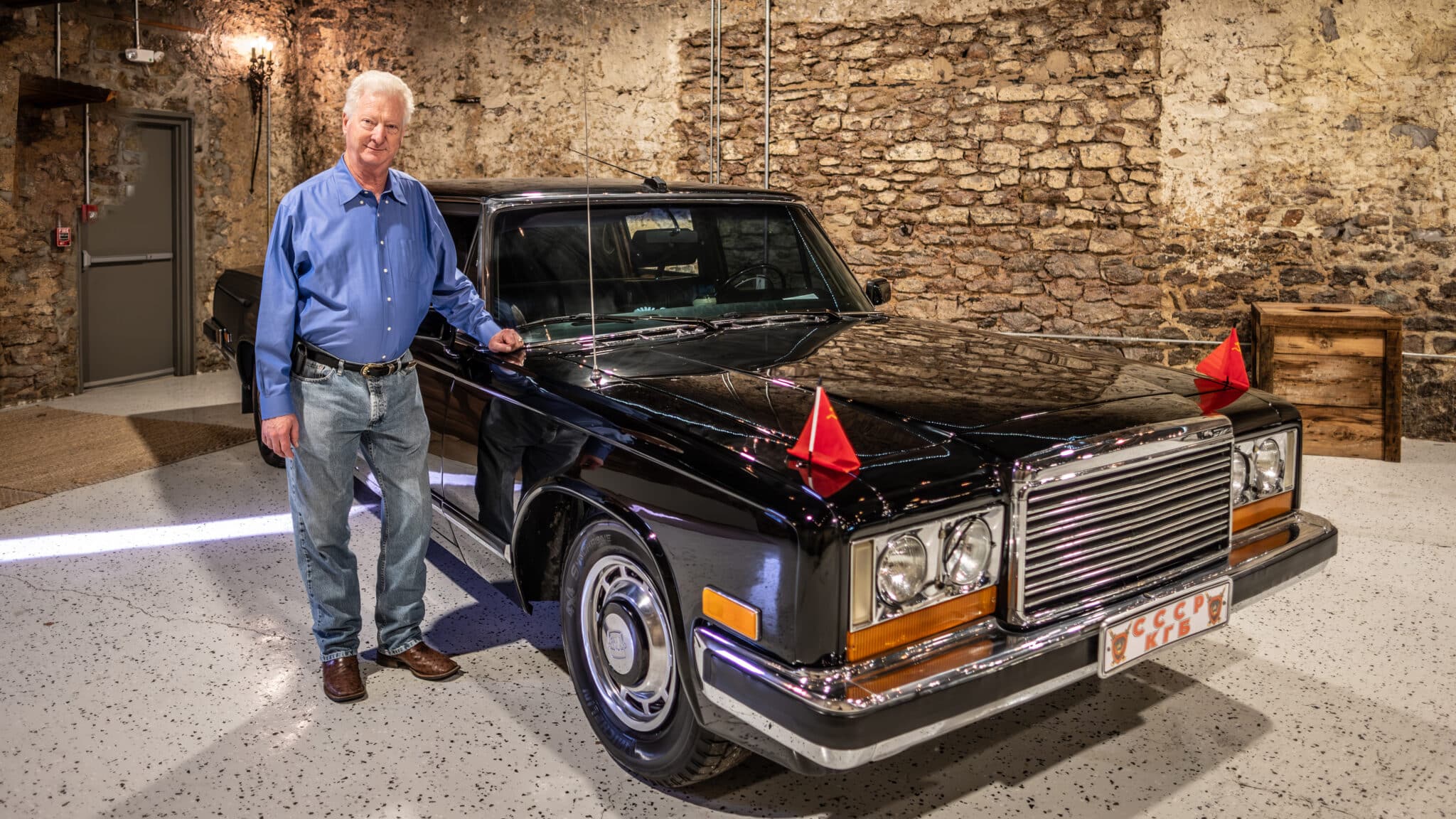
Fort Worth’s Tom Moncrief adds rare Russian limo made for dignitaries to car collection
By Scott Nishimura
Photography by Olaf Growald
Tom Moncrief was looking to make a “fairly significant” addition to his vintage auto collection last summer, when he web-surfed into an auction listing for a black 1985 ZiL 41045 limousine — ZiL, a now-defunct Russian car and truck brand.
“I bid on it,” Moncrief said during a recent interview at his Vintage Car Museum in downtown Weatherford. “Way less than I thought the car was worth, and got it.”
Moncrief, an investor and businessman, snagged the car for $140,000 — he says he was willing to go to $150,000 in the auction at the bringatrailer.com site — from the collector in New Jersey who owned it.
It’s one of 34 vehicles in Moncrief’s collection, which includes a 1964 Lincoln that Lyndon Baines Johnson drove on his Texas ranch and a 1956 Broadmoor Cadillac wagon that Moncrief once used to pack his guests to the Jewel Charity Ball, benefiting Fort Worth’s Cook Children’s Medical Center. “We had a table for 12, and it seats 12,” he said.
Moncrief had the ZiL trucked to Fort Worth, where he unveiled the car in November at the museum and has spent time getting to know it.
“We found the siren (one of the two the car reportedly has) yesterday,” Moncrief said. One problem in figuring out the car’s controls: “Everything on it is Russian.”
The Russians made the rare ZiL for heads of state and high government officials, and the summer auction listing said: “The car is believed to have been part of (President) Mikhail Gorbachev’s fleet and was registered to the automotive department of the president of the Russian Federation as recently as 2001.”
Moncrief, who once met Gorbachev at a function in Dallas, isn’t making lofty claims about the car. “It’s not the presidential limousine,” he said. “As far as I can tell, it’s not bulletproof.”
The 7,600-pound car, however, features a tank engine, Moncrief said. The auction listing said other equipment included “tinted triple-laminated windows;” four-wheel disc brakes; air conditioning; front bucket seats; adjustable rear bench seat; rear jump seats; loudspeaker; flashing headlights, taillights and red lights behind the grill; front and rear telephones (the rear one was missing, Moncrief said); rear audio and climate controls; stereo; and cassette player.
During two public parties Moncrief held to introduce the car, he turned the flashing lights on, to the delight of visitors, but elected against sounding the siren indoors.
The car has three brake systems, two hydraulic systems, two ignition systems, and an under-dash power shutoff, Moncrief said.
Other details and equipment: ZiL hood ornament; headlight wipers; chrome bumpers and lower body trim; ZiL-logo rear mudguards; dual exhausts; and a trunk full of parts.
Besides the language barrier in understanding the car’s functions, Moncrief ran into an unexpected problem when he visited the Parker County courthouse to get the car registered. He correctly figured it would be difficult to get the courthouse employees to verify the make and model of the car.
“They said ‘It’s a what?’” Moncrief said. Then “I had to drive it down to the truck stop to get it weighed. I don’t know why they needed it.”
Moncrief, who became fascinated by cars when he was a child but isn’t a mechanic, opened the museum seven years ago in Weatherford after first considering Fort Worth.
“I don’t do a lot of the work myself,” said Moncrief, whose daily drive is a 1970 Cadillac Coupe DeVille. “I have a mechanic who comes by every Monday and starts the cars.”
He’s talked to the New Jersey mechanic who maintained the limo after it came to the United States. “I’ve sat here a couple of times, just flipping switches, trying to figure out what stuff means,” he said.
He revels in letting visitors — one of his two unveiling parties was for gearheads — experience the cars. The museum isn’t a nonprofit and doesn’t charge admission. “It doesn’t make a profit,” he said, with a smile.
